Tvisha Edge Technologies has always at the forefront of innovation, pushing the boundaries of graphic design to create stunning visuals that captivate audiences. As we move into 2025, motion graphics and 3D design are emerging as dominant forces shaping the future of visual communication. From immersive branding experiences to AI-driven creativity, the graphic design industry is undergoing a transformation like never before.
1. Motion Graphics: The Future of Visual Storytelling
Motion graphics have become an essential component of modern design, bridging the gap between static visuals and animated storytelling. With the rise of short-form video content, social media animations, and interactive UI elements, motion graphics are no longer optional—they’re a necessity. Brands are leveraging motion design to enhance user engagement, boost conversions, and create memorable experiences.
Key Trends in Motion Graphics for 2025:
- Kinetic Typography: Text animations that add personality to brand messaging.
- Liquid Motion Effects: Smooth transitions and fluid animations that create a mesmerizing effect.
- Micro-Interactions: Small yet impactful animations that improve user experience on websites and apps.
- Augmented Reality (AR) Motion Graphics: Integrating AR elements into designs for an immersive feel.
2. The Rise of 3D Design
3D design has taken center stage in digital experiences, offering depth, realism, and interactivity. From product design to website visuals, 3D graphics are transforming the way brands communicate. With advancements in software like Blender, Cinema 4D, and Unreal Engine, designers now have powerful tools to create lifelike visuals.
Why 3D Design is the Future:
- Hyper-Realistic Visuals: Enhanced textures, lighting, and physics bring designs to life.
- Immersive Branding: Companies use 3D elements for unique branding strategies.
- E-commerce Revolution: 360-degree product views and interactive models improve online shopping experiences.
- NFTs and Digital Art: The rise of blockchain has fueled the demand for 3D digital collectibles and virtual assets.
3. AI-Powered Design Tools
Artificial Intelligence is playing a significant role in shaping the future of graphic design. AI-powered design tools such as Adobe Sensei, RunwayML, and Deep Dream are automating complex tasks, allowing designers to focus on creativity rather than technical execution.
AI-Driven Innovations:
- Automated Animation: AI tools generate smooth animations with minimal manual input.
- AI-Powered Color Suggestions: Smart color palettes enhance brand aesthetics.
- Generative Design: AI assists in creating unique patterns, logos, and layouts.
- Voice-Controlled Editing: Designers can use voice commands to manipulate elements in real time.
4. The Impact of Virtual and Augmented Reality
Virtual Reality (VR) and Augmented Reality (AR) are redefining design by offering immersive experiences that go beyond traditional visuals. Brands are integrating AR and VR elements into marketing campaigns, gaming interfaces, and educational content.
How AR/VR is Influencing Graphic Design:
- Interactive Packaging: AR-powered packaging that displays animations when scanned.
- Virtual Showrooms: 3D models of products in VR environments.
- Holographic Displays: Future billboards and advertisements featuring 3D holograms.
- AR Filters & Lenses: Social media platforms using custom AR filters for branding.
5. Sustainability in Design
As businesses and consumers become more environmentally conscious, sustainability in design is gaining traction. Designers are prioritizing eco-friendly visuals, minimalism, and digital-first branding to reduce waste and create meaningful content.
Sustainable Graphic Design Practices:
- Minimalist Aesthetics: Clean and simple designs that convey messages efficiently.
- Energy-Efficient Animations: Optimized motion graphics that reduce data consumption.
- Virtual Print Media: Brands shifting from physical prints to interactive digital brochures.
- Reusable 3D Assets: Modular 3D elements that reduce repetitive design efforts.
6. The Future of Typography & Fonts
Typography continues to evolve, with designers experimenting with dynamic fonts, variable typography, and animated text. The use of custom, brand-specific typefaces is increasing, allowing businesses to stand out in a crowded digital space.
Typography Trends for 2025:
- 3D and Layered Fonts: Adding depth to traditional text.
- Responsive Typography: Fonts that adapt to different screen sizes and devices.
- Handwritten and Organic Fonts: Giving brands a more personal touch.
- AI-Generated Fonts: Unique typefaces created through machine learning algorithms.
7. The Evolution of Branding and UI/UX Design
Branding and user experience are becoming more intertwined with advanced UI/UX design principles. Businesses are focusing on fluid animations, seamless transitions, and interactive elements to enhance their digital presence.
UI/UX Trends to Watch:
- Neumorphism & Glassmorphism: Soft UI elements with futuristic effects.
- Scroll-Based Interactions: Dynamic content triggered by scrolling.
- Dark Mode Adaptation: More brands adopting dark-themed designs.
- Immersive Storytelling: Combining text, animation, and visuals for engaging brand narratives.
Tvisha Edge Technologies is a Graphic Design in India including locations Andhra Pradesh, Arunachal Pradesh, Assam, Bihar, Chhattisgarh, Goa, Gujarat, Haryana, Himachal Pradesh, Jharkhand, Karnataka, Kerala, Madhya Pradesh, Maharashtra, Manipur, Meghalaya, Mizoram, Nagaland, Odisha, Punjab, Rajasthan, Sikkim, Tamil Nadu, Telangana, Tripura, Uttar Pradesh, Uttarakhand, and West Bengal.
Tvisha Edge Technologies is Best Graphic Design Company in Singapore Including Locations Jurong East, Kallang, Marina Bay, Pasir Ris, Yishun, Bukit Timah, Central Area, Eastern Singapore, Kampong Glam, Little India, Orchard, Queenstown, Sengkang, Sentosa and Tampines.

